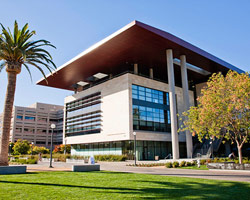
Scientists have devised a swift and efficient method to transform cells obtained from standard liposuction into liver cells. Credit: Stanford School of Medicine
Using adipose stem cells from human liposuction aspirates, scientists have developed a fast, efficient way to turn cells extracted from routine liposuction into liver cells.
In a feat of modern-day alchemy with huge potential for regenerative medicine, Stanford University School of Medicine scientists have developed a fast, efficient way to turn cells extracted from routine liposuction into liver cells.
The advance is described in a study published October 21 in Cell Transplantation.
The scientists performed their experiments in mice, but the adipose stem cells they used came from human liposuction aspirates and became human, liver-like cells that flourished inside the mice’s bodies. This method is distinct from those producing liver cells from embryonic stem cells or induced pluripotent stem cells. Although iPS and embryonic stem cells are pluripotent — they can, in principle, differentiate into every cell type — they carry a palpable risk of forming tumors. However, the cells produced using this new technique, which involves no intermediate pluripotent phase, show no signs of being tumorogenic.
The liver is the body’s chemistry set. It builds complex biomolecules we need, and it filters and breaks down waste products and toxic substances that might otherwise accumulate to dangerous levels. Unlike most other organs, a healthy liver can regenerate itself to a significant extent. But this capacity cannot overcome acute liver poisoning or damage from chronic alcoholism or viral hepatitis.
Acute liver failure from acetaminophen alone takes about 500 lives annually and accounts for close to 60,000 emergency room visits and more than 25,000 hospitalizations annually. Other environmental toxins, including poisonous mushrooms, contribute still more cases.
All aspects of the new fat-to-liver technique are adaptable for human use, said Gary Peltz, MD, PhD, professor of anesthesia and the study’s senior author. Creating iPS cells requires introducing foreign and potentially carcinogenic genes. But adipose stem cells merely have to be harvested from fat tissue. The process takes nine days from start to finish — fast enough to regenerate liver tissue in acute liver poisoning victims, who would otherwise die within a few weeks, barring liver transplantation.
Some 6,300 liver transplants are performed annually in the United States, with another 16,000 patients on the waiting list. Every year, more than 1,400 people die before a suitable liver can be found for them. While it can save lives, liver transplantation is complicated, risky and, even when successful, fraught with aftereffects. Typically, the recipient is consigned to a lifetime of taking immunosuppressant drugs to prevent organ rejection.
“We believe our method will be transferable to the clinic,” Peltz said. “And because the new liver tissue is derived from a person’s own cells, we do not expect that immunosuppressants will be needed.”
Liver cells are not something an adipose stem cell normally wants to turn into, Peltz said.
The Stanford team knew it was possible, though. Another way of converting liposuction-derived adipose stem cells to liver-like cells (called i-Heps, for induced hepatocytes) had been developed in 2006 by Japanese researchers. But that method, which relies on chemical stimulation, requires 30 days or longer and is inefficient; it could not produce enough material for liver reconstitution. (Working with iPS cells takes even longer; they must first be generated from adult cells before they can be converted to i-Heps.)
Using a different technique — Peltz refers to it as spherical culture — he and his associates were able to achieve the conversion within nine days with an efficiency of 37 percent, as opposed to the vastly lower yield obtained with the prior method (12 percent) or using iPS cells. (Peltz said improvements since the study’s publication now enable yields exceeding 50 percent within seven to eight days.)
Dan Xu, PhD, a postdoctoral scholar, and the study’s lead author, adapted the spherical culture methodology from early embryonic-stem-cell literature. Instead of growing on flat surfaces in a laboratory dish, the harvested adipose stem cells are cultured in a liquid suspension in which they form spheroids. “This seems to make them happier,” Peltz said.
When they had enough cells, the investigators tested them by injecting them into immune-deficient laboratory mice that accept human grafts. These mice were bioengineered in 2007, in a collaboration between Peltz’s lab and study co-author Toshihiko Nishimura, MD, PhD, and other scientists at the Tokyo-based Central Institute for Experimental Animals. Only the livers of these mice contained an extra gene that would convert the antiviral compound gancyclovir into a potent toxin. When these mice were treated with gancyclovir, their liver cells died off quickly.
At this point the investigators injected 5 million i-Heps into the mice’s livers. To do that — no mean feat, as these tiny organs weigh a scant 1.8 grams — they used an ultrasound-guided injection procedure that is routinely employed in gastroenterological clinics for biopsies.
Four weeks later, the investigators examined the mice’s blood and found the presence of a protein (human serum albumin) that is only produced by human liver cells and was shown to be an accurate proxy for the number of new human liver cells in these experimental mice’s livers. The mice’s blood had substantial human serum albumin levels, which nearly tripled in the following four weeks. These blood levels correspond with the repopulation of roughly 10-20 percent of the mice’s pre-destroyed livers by new human liver tissue. (Past studies have shown only miniscule human serum albumin production, at best, in mice given similar amounts of chemically induced i-Heps.)
Blood tests also revealed that the mice’s new liver tissue was discharging its waste-filtration responsibility. Examination of the livers themselves showed that the transplanted cells had integrated into the liver, expressed surface markers unique to mature human hepatocytes, and produced multi-cell structures required for human bile duct formation. Other tests indicated that the spherically cultured i-Heps resembled natural human hepatocytes more closely than did i-Heps produced from iPS cells.
Importantly, two months after injection of i-Heps produced by spherical culture, there was no evidence of tumor formation. But mice in which IPS-cell-originated i-Heps were introduced developed multiple tumors, which could be felt through the body surface within three weeks.
At 1,500 grams, a healthy human liver is more than 800 times the size of a mouse’s and contains about 200 billion cells. “To be successful, we must regenerate about half of the damaged liver’s original cell count,” said Peltz. With spherical culture, he said, close to a billion injectable iHeps can be produced from 1 liter of liposuction aspirate, readily obtained from a single liposuction procedure. The cell replication that takes place after injection expands that number further, to over 100 billion i-Heps.
That could be enough to substitute for a human liver transplant, Peltz said. Stanford’s Office of Technology Licensing has filed a patent on the use of spherical culture for hepatocyte induction. Peltz’s group is optimizing the culture and injection techniques, talking to the U.S. Food and Drug Administration, and gearing up for safety tests on large animals. Barring setbacks, the new method could be ready for clinical trials within two to three years, he estimated.
Additional Stanford co-authors were Jeffrey Glenn, MD, PhD, associate professor of medicine; Sara Michie, MD, professor of pathology; Gordon Lee, MD, associate professor of plastic surgery; and research associates Ming Zheng, PhD, and Manhong Wu, PhD.
The study was funded by a grant from the National Institute of Diabetes and Digestive and Kidney Diseases (grant 1R01DK0909921).
Information about Stanford Medicine’s Department of Anesthesia, which also supported the work, is available at http://med.stanford.edu/anesthesia.
Reference: “Enabling Autologous Human Liver Regeneration With Differentiated Adipocyte Stem Cells. Cell Transplantation” by Dan Xu, Toshihiko Nishimura, Ming Zheng, Manhong Wu, Hua Su, Noboru Sato, Gordon Lee, Sara Michie, Jeffrey Glenn and Gary Peltz, 21 October 2013, Cell Transplantation.
DOI: 10.3727/096368913X673432


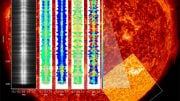
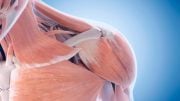
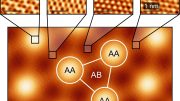


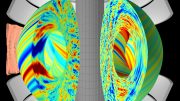

Adipose stem cells used from human liposuction aspirates and culturing them in a refined method of liquid suspension to multiply is a noteworthy discovery in cell science which when augmented can do some miracles in liver cell multiplication without producing tumor genesis and avoiding immunosuppressants as in the case of liver transplantation in future. I wish all the best in its future application. thank You.